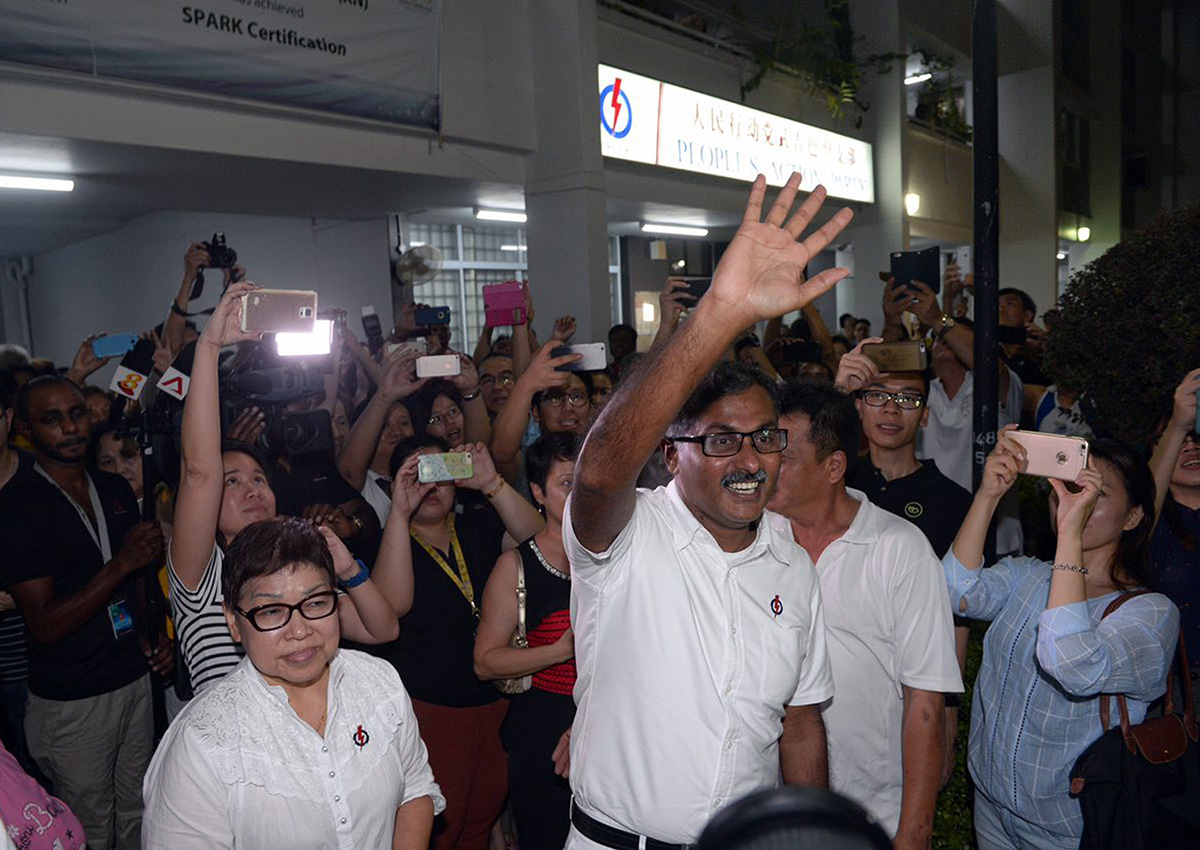Two weeks ago, I wrote about “Five things to watch out for in the Bukit Batok by-election”. So what do the results show of those issues?
First, that Singaporeans do not vote simply along racial lines. The People’s Action Party (PAP) candidate, lawyer Murali Pillai, 48, an Indian, got 61.2 per cent of the vote. He beat Singapore Democratic Party (SDP) chief Chee Soon Juan, 53, who is Chinese and has a higher national profile, and who got 38.8 per cent. The winning margin was a high 5,286 votes.
To be sure, a candidate’s race – and age, gender, occupation or lack thereof, even mien and likeability – can all swing individual voters. But at the aggregate level, it is highly significant that a heartland constituency with 74 per cent Chinese, 13 per cent Malay, 11 per cent Indian and 2 per cent of other races, can hand such a decisive victory to a minority candidate. It suggests that Singaporeans are, if not totally race-blind, then at least race-neutral in their vote. Race may matter to some, but not all voters, and not decisively in most cases.
Second thing to note: How much might voters “punish” the incumbent PAP for having an adulterous MP? In the 2013 Punggol East by-election sparked by incumbent PAP MP Michael Palmer’s resignation over an extramarital affair, the vote swing against the PAP was 10.8 percentage points.
This time, Bukit Batok voters deserted the PAP with a swing of 11.8 percentage points, just eight months after the PAP’s Mr David Ong got 73 per cent of the vote last September. He quit in March over an extramarital affair.
If one can parse such things, one is tempted to say PAP voters hand out a 10 percentage point penalty for such misconduct.
This is in contrast to Workers’ Party (WP) voters. In Hougang, WP’s Mr Yaw Shin Leong got 64.8 per cent in the 2011 General Election. Then, he was sacked over an extramarital affair. WP’s Mr Png Eng Huat defended the party’s stronghold in the 2012 by-election, getting 62.1 per cent. The drop: 2.7 percentage points.
Is the large difference in penalty due to innate differences between voters of different constituencies, or to the different expectations of their MPs held by WP and PAP voters? One wonders.
Third, this by-election’s result is consistent with the belief that voters respond better to candidates with grassroots appeal.
Again, a comparison with Punggol East is apt. There, WP candidate Lee Li Lian garnered 41 per cent of the vote in GE2011. In the 2013 by-election, she won the seat with 54.5 per cent against PAP candidate Koh Poh Koon, a surgeon who the PAP said was of ministerial calibre. But he was new to the area and lost to Ms Lee, a by-then familiar face to residents.
In Bukit Batok this time, the PAP chose Mr Murali, with 16 years of grassroots experience in the estate. Both candidates campaigned on municipal issues, coming up with social and community plans. The result suggests the grassroots strategy works.
The fourth issue was what the result says about voters’ acceptance of the controversial
Dr Chee, who has fought not only with the PAP but also his former mentor, but who has worked hard to build up the SDP and change his image in recent years.
His reception by Bukit Batok voters suggests Dr Chee is making inroads into the hearts and minds of heartland voters. The 38.8 per cent he managed is his personal best, nearly double the 20 per cent his team got in Jurong GRC in 2001. No wonder he said, minutes after the official count was released : “This doesn’t feel like a defeat.”
His vote share is 5.4 percentage points higher than the 33.4 per cent his team got in GE2015 in Holland-Bukit Timah GRC, where about 45 per cent of voters live in private housing. That Dr Chee, standing alone in a seat with 95.7 per cent who live in public housing, can better his GRC team’s result, flies in the face of conventional belief that he appeals more to the middle class. Perhaps that Hokkien music video Dr Chee starred in had some marginal impact. A 5.4 percentage point increase is hardly the huge swing Dr Chee would have needed for a win. Still, the result will embolden Dr Chee and trouble some in the PAP, which considers Dr Chee the kind of opposition politician Singapore does not need.
The fifth issue: This by-election shows that yes, the opposition is capable of unity. Leaders from the other major parties did not enter the fray, to allow this straight fight between the PAP and SDP.
One final point about that 11.8 percentage point swing against the PAP. That might be due in part to the “adultery penalty” theory alluded to earlier. But I think a large part is due to the loss of the halo effect from SG50 and the Lee Kuan Yew factor, that had buoyed the PAP to its 69.9 per cent win in GE2015.
Stripped of those factors, the vote share this time is probably a better gauge of heartlanders’ sentiments towards the PAP on the ground.
Assured of a PAP government in power (this is just a by-election after all), and freed from a sense of showing loyalty to Singapore’s founding Prime Minister and his party, voter sentiment seems to have reverted back to past norms.
In other words, 70 per cent in 2015 was likely a blip. The PAP will have to contend with the vote share dipping back to the low to mid-60s – and work very hard to keep it up.

This article was first published on May 8, 2016.
Get a copy of The Straits Times or go to straitstimes.com for more stories.
























































































